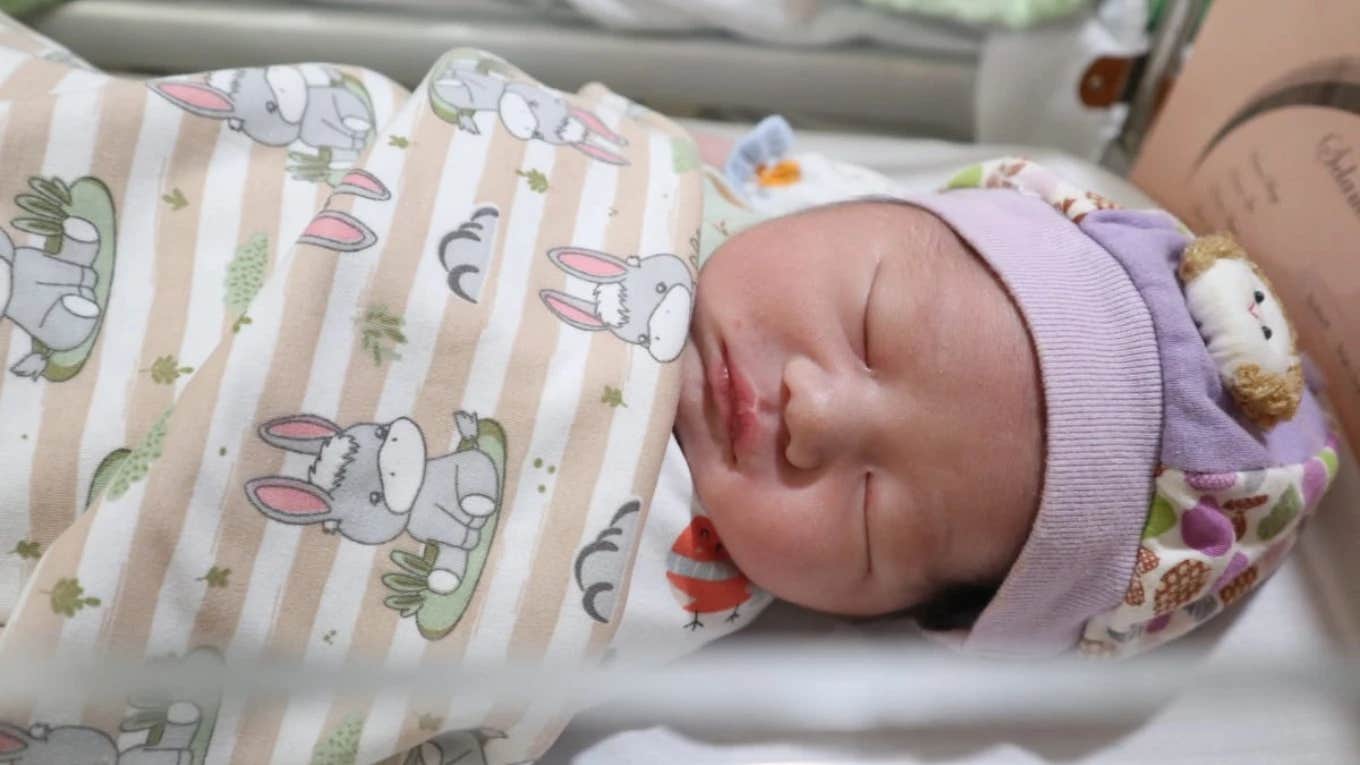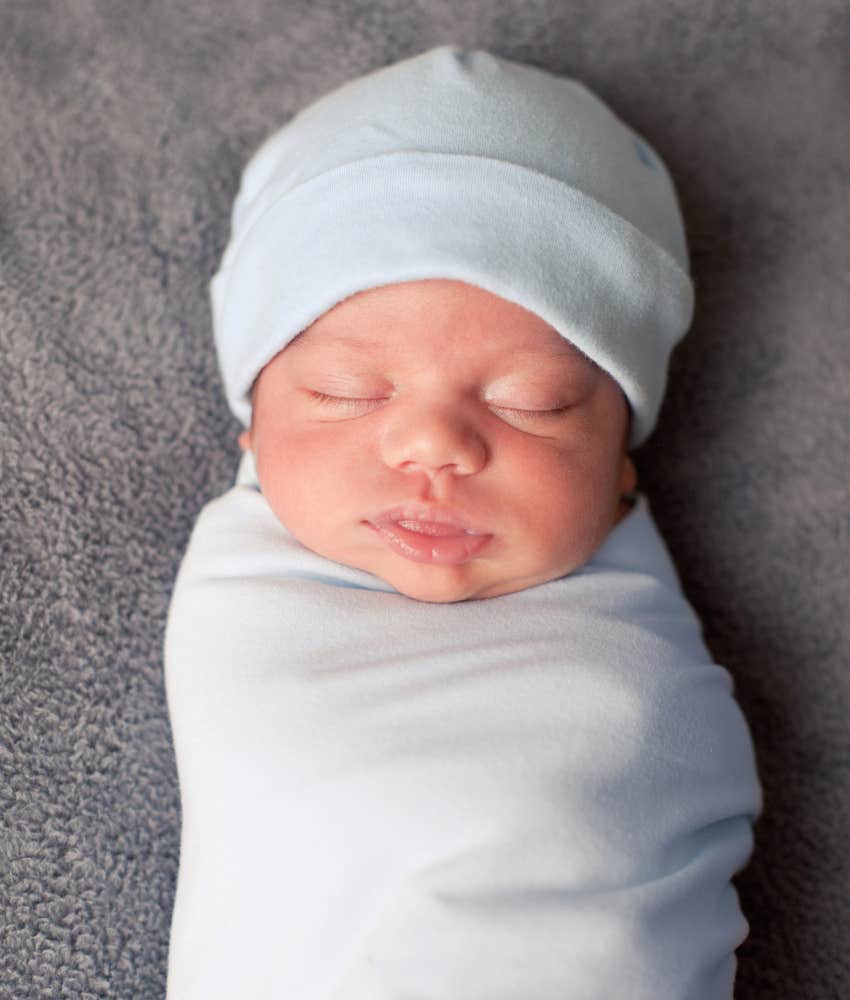Study Shows AI & Stock Photos May Be Contributing To A Worrying 12% Spike In Infant Fatalities
Sleep-related infant fatalities are up for the first time since the 1990s.
 Ervsh | Ivana Maliha's Images | Canva Pro
Ervsh | Ivana Maliha's Images | Canva Pro A new batch of research shows a worrying trend in infant mortality. After falling steadily for more than 20 years, rates of sleep-related infant deaths went up between 2020 and 2022.
Why exactly this is happening isn't conclusively known, but a study by parenting and baby care website BabyCenter provided one possible factor at play — the image we're all constantly seeing in the news and social media.
The study showed that AI and stock photos of babies sleeping may be contributing to a worrying spike in infant fatalities.
From 1999 to 2022, overall infant mortality in the United States decreased fairly drastically by 24%. But new research recently published in the Journal of the American Medical Association found that sudden unexplained infant deaths (SUID) — when a child under one year of age dies with no obvious cause — actually spiked by 12% from 2020 to 2022.
Much like the more commonly known Sudden Infant Death Syndrome (SIDS), which is a type of SUID, most cases of SUID occur while a baby is sleeping or in their sleep area. Pediatricians at Virginia Commonwealth University and the University of Washington who conducted the new research posited several possible explanations, from the rise of COVID-19 in 2020 to increased rates of opioid addiction in recent years.
They also point; however, to the rising commonality of unsafe sleep practices regularly highlighted on social media. Research conducted by BabyCenter showed that this is indeed a likely factor in the rise of infant deaths. They looked into the top 500 results of searches for "sleeping baby" on the top stock photo websites used by news and media outlets and made some rather startling discoveries.
BabyCenter found that 3 in 4 photos online show unsafe sleeping behaviors for infants.
Rates of SIDS saw a precipitous decline in the 1990s due to a national information campaign about the safest way for babies to be put to sleep — on their backs, rather than their stomachs, which lessens the risk of choking, suffocation, and other hazards.
Over the years, other guidance has become ubiquitous too — keeping babies' cribs free of stuffed animals, for instance, and swaddling them tightly with their arms inside the blanket, which both reduce the risk of suffocation as well.
But the 90s were a different world — there were no "mommy blogs" or social media platforms churning out parenting content with photos to go along with it like there is nowadays. And BabyCenter found that those photos that are constantly in our feeds more often than not show practices that go against safe sleeping recommendations by organizations like the American Academy of Pediatrics.
 ideabug | Getty Images Signature | Canva Pro
ideabug | Getty Images Signature | Canva Pro
BabyCenter found that 77% of sleeping baby photos on leading photo services like Getty Images, Shutterstock, and iStock show unsafe infant sleeping practices, with the most common being photos showing babies sleeping with a blanket in their crib (35%), a pillow in the crib (18%), or soft toys in the crib (16%).
Photos showing babies sleeping on soft surfaces outside of a crib or bassinet, sleeping in an adult bed, or sleeping on their stomach or side were also common. The rise of AI-generated photos, not just on stock services but on social media apps themselves, is increasing the frequency of unsafe photos.
Dr. Olufunke Afolabi-Brown, M.D., a board-certified pediatric sleep physician, told BabyCenter that the increasing ubiquity of these photos risks "creating a false sense of security about practices that have been linked to sleep-related deaths."
BabyCenter's data is in line with scientific research on parenting-related social media content.
Dr. Elizabeth Wolf, a pediatrician at Virginia Commonwealth University School of Medicine and one of the authors of the study showing the increase in infant death, told The New York Times that she and her colleagues have been alarmed by how pervasive unsafe parenting practices are on social media these days.
She drew particular attention to a 2021 study which showed that out of a total of 1563 images of infants sleeping that were used in parenting and babycare-related posts on Instagram, just 117 — 7% — were in line with the AAP's guidelines for safe sleep practices.
Pediatricians say that the safest sleep practices for infants are placing them on their backs in a crib, bassinet, or playpen with a firm mattress and tightly fitted sheet. Loose bedding, toys, or bumpers should be removed as the increased risk of suffocation.
While pediatricians recommend room-sharing, especially during an infant's first six months and ideally throughout its first year, the AAP says that the increasingly popular practices of bed-sharing or co-sleeping should not be practiced under any circumstances due to risks of entrapment, suffocation, and being crushed by a parent, pet or larger child sleeping beside them.
John Sundholm is a writer, editor, and video personality with 20 years of experience in media and entertainment. He covers culture, mental health, and human interest topics.

